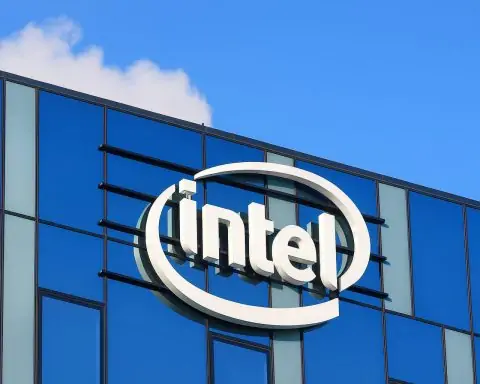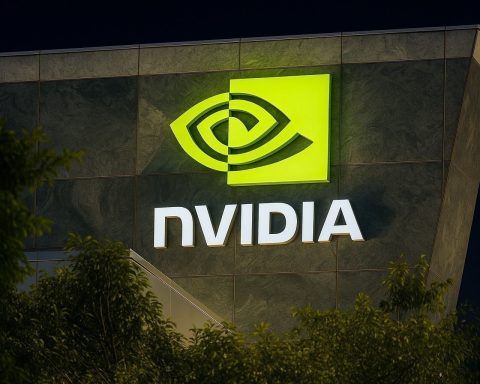- Starlink launched its first batch of 60 satellites in 2019, and by late 2024 the constellation numbered nearly 7,000 satellites in low-Earth orbit.
- In 2022 Starlink introduced laser inter-satellite links, enabling data to hop between satellites and extending coverage to oceans, polar regions, and remote locales.
- By mid-2023 Starlink declared global coverage aside from regulatory holdouts, with service reaching Arctic areas and mid-ocean shipping lanes.
- By early 2024 Starlink was legally available in about 70 countries.
- Starlink’s user base grew from 1 million by end-2022 to over 4.6 million by end-2024, with more than 5 million users expected by early 2025 across 125+ countries.
- Pricing started around $99 per month with a $499 hardware kit, while Nigeria offered roughly $25 per month and a hardware cost around $290 after a 2024 price cut.
- The T-Mobile direct-to-cell plan was announced in 2022 and aimed to go live in 2024–25.
- Starlink has partnered with Bharti Airtel in India and Africa Mobile Networks to distribute service and backhaul capacity to 1,500+ remote mobile base stations.
- In 2024 Starlink revenue was estimated at $7.8–8 billion, a major contribution to SpaceX’s roughly $13 billion total revenue.
- By early 2025 Starlink had operating authority in 125+ countries, while China bans Starlink and South Africa faced licensing delays due to 30% local-ownership rules.
SpaceX’s Starlink has rapidly built a mega-constellation of satellites that is reshaping how the world accesses the internet. Since launching the first batch of 60 satellites in 2019, Starlink has put thousands of satellites into low-Earth orbit to blanket the planet with broadband coverage [1]. By late 2024, nearly 7,000 Starlink satellites were in orbit – a constellation dwarfing all others [2]. This “sky grab” of orbital real estate has enabled Starlink to reach millions of users globally, many in remote areas previously left offline. Starlink’s explosive growth – from 1 million users at end-2022 to over 4.6 million by end-2024 [3] – signals a quiet but profound shift in the global internet game, as satellite broadband emerges as a viable alternative where traditional fiber and cell networks fall short. The following report examines Starlink’s evolution, its expanding coverage and market penetration across regions, competitive and regulatory hurdles, business strategies, and its social-economic impacts on connectivity and the digital divide.
Global Coverage Expansion and Technological Developments
Starlink’s journey from concept to global coverage has been remarkably swift. Deployment milestones include the public beta rollout in October 2020, followed by rapid expansion to dozens of countries by 2021-2022 as more satellites launched. SpaceX hit the 1,000-satellite mark in January 2021 and surpassed 5,000 active satellites by late 2023 [4]. Each launch of ~50 satellites added capacity, and by 2024 SpaceX was launching Starlink missions multiple times per week to meet demand [5]. In 2022, Starlink introduced laser inter-satellite links on newer satellites, allowing data to hop between satellites in space. These laser links made it possible to serve areas without nearby ground stations – enabling coverage over oceans, polar regions, and remote locales worldwide [6]. By mid-2023, Starlink declared it had achieved global coverage (aside from regulatory holdouts), with service extending to even arctic areas and mid-ocean shipping lanes [7].
Key technological updates have accompanied Starlink’s growth. In 2022 SpaceX unveiled an upgraded user terminal (“Dishy”) and later a high-performance flat antenna for mobile use. A smaller, backpack-portable “Starlink Mini” dish is reportedly in development for 2024, aimed at campers and users on the move [8]. On the satellite side, SpaceX began deploying “V2 Mini” satellites in 2023 – larger, more capable satellites launched on Falcon 9 rockets to boost capacity until SpaceX’s new Starship rocket comes online [9] [10]. The Starlink V2 satellites (full-size) are designed to be deployed by Starship in the future and will massively increase network throughput – each V3 satellite is planned to handle up to 1 Tbps of downlink bandwidth (10× the V2 Mini’s capacity) [11] [12]. Together, these innovations – from inter-satellite lasers to next-gen satellites and user hardware – are steadily improving Starlink’s coverage, capacity, and service quality across the globe.
Global reach of Starlink: By early 2024, Starlink’s satellite internet service was legally available in ~70 countries (shaded in blue), with only a few large nations like China, Russia, and Iran remaining off-limits due to regulations [13] [14]. Thanks to thousands of low-orbit satellites with laser cross-links, Starlink can deliver connectivity even over oceans and polar regions beyond the reach of terrestrial networks [15]. The map above illustrates Starlink’s coverage footprint – virtually worldwide aside from certain banned or unserved areas.
Market Penetration Trends by Region
Starlink’s subscriber base has grown dramatically, surpassing 5 million users in 2024 and spanning every continent [16]. However, adoption has varied across regions depending on existing internet options and local conditions. Below is a region-by-region look at Starlink’s market penetration:
- North America: This is Starlink’s first and largest market. In the United States and Canada, tens of thousands of rural households signed up during the 2020–2021 beta, when terrestrial broadband was often unavailable or slow. By the end of 2023, SpaceX reported about 1.3 million U.S. subscribers, growing to over 1.4 million by mid-2024 [17]. Growth in the U.S. has begun to level off as most early adopters have been connected [18]. Canada and Mexico have also seen significant uptake. Mexico in particular not only authorized Starlink early (service began in 2021) but also signed a national “Internet for All” contract to use Starlink for rural connectivity – leading to over 160,000 Mexican subscriptions by mid-2024 [19] [20]. Across North America, Starlink is now a popular option for remote farms, indigenous communities, and even RV owners, though in urban areas it remains a niche due to competition from cheap, fast fiber and cable.
- Europe: Starlink faces a saturated broadband market in much of Europe, limiting its penetration. The European Union has 79% household coverage with gigabit-speed fiber or cable networks [21]. Given that fiber plans often cost half the price of Starlink in Europe [22], most European urban and suburban consumers have little incentive to switch. Starlink’s European user base is therefore concentrated in underserved rural regions – for example, remote islands, Alpine villages, and pockets of Eastern Europe with poor infrastructure [23] [24]. The UK has seen notable adoption in rural areas, with Starlink’s UK subscribers roughly doubling to 87,000 in 2024 (mostly in countryside communities) [25]. Similar patterns are observed in France, Germany, and Spain, where Starlink fills connectivity gaps for farms and mountain towns. Overall, Europe accounts for a modest share of Starlink’s users, and officials view it as complementary for remote areas rather than a direct threat to dominant fiber ISPs [26] [27].
- Asia-Pacific: Starlink’s presence in Asia is expanding but uneven. Australia and New Zealand were among the early markets (service began in 2021) and saw quick uptake in the Outback and rural Maori communities. In East Asia, Japan’s KDDI partnered with Starlink to connect remote mobile towers, and Starlink service has launched in Japan and South Korea with moderate adoption for rural/backup use. South Asia is a new frontier: in May 2024 Elon Musk traveled to Indonesia to inaugurate Starlink at a village health center [28] [29], marking one of the first deployments in Southeast Asia. The Philippines was actually the first Southeast Asian country to get Starlink (in early 2023), with plans to cover its 7,000 islands – as of late 2023 about 30,000 terminals were active across Philippine schools and communities [30] [31]. India, with its huge rural population, remains the biggest prize – Starlink has cleared some regulatory hurdles and even inked a deal with telecom giant Bharti Airtel to jointly offer service once fully approved [32] [33]. As of early 2025, Starlink was not yet officially live in India or neighboring Pakistan, but it is “on track” pending final licenses [34]. Across Asia-Pacific, Starlink’s market penetration is poised to grow in 2025, focused on archipelagos, remote villages, and island nations like the Philippines, Indonesia, and Pacific states (e.g. Tonga, which used Starlink for emergency connectivity after a 2022 tsunami [35] [36]).
- Latin America: Latin America has emerged as one of Starlink’s fastest-growing markets. As of November 2024, Starlink was live in 28 Latin American countries and territories [37] [38] – essentially the entire region except a few holdouts. Brazil and Mexico are the “big hitters.” Brazil granted approval in 2022, and Starlink quickly scaled to nationwide availability by early 2023 [39]. By late 2024 Brazil had over 264,000 Starlink subscribers – a more than doubling from ~115k a year prior [40]. Starlink in Brazil is serving not only affluent remote workers in rural areas but also partnering on social projects: Musk pledged to connect 19,000 unserved schools and to help monitor Amazon deforestation via Starlink links [41]. Mexico similarly saw rapid growth: Starlink launched there in 2021 and by mid-2024 had 160,000+ users [42], boosted by a government-backed “Internet para Todos” program that contracted Starlink to connect rural communities [43]. Many smaller countries from Colombia and Chile to Caribbean island nations now have active Starlink service as well [44] [45]. The relatively high cost means Starlink in Latin America often serves businesses, government programs, or wealthier rural customers; nonetheless, it is dramatically improving internet access in places like the Amazon rainforest and the Andes where terrestrial networks never reached.
- Africa: Africa is the newest region in Starlink’s expansion, with service coming online in 2023. By May 2024 Starlink was live in 8 African countries, and SpaceX targeted over a dozen more by the end of 2024 [46] [47]. Nigeria was the first African nation connected (Feb 2023) [48], and Starlink’s impact there has been striking. Within two years, Starlink became Nigeria’s second-largest ISP by subscribers, capturing 65,000+ customers by late 2024 [49]. Despite its premium price, Nigerians have flocked to Starlink for its reliable speed in areas where fiber or even 4G is unreliable [50] [51]. Starlink is also live in Rwanda, Kenya, Mozambique, Malawi, Zambia, Benin, and Eswatini, with more countries joining in 2024 [52]. For instance, Kenya authorized Starlink in mid-2023 and immediately saw strong demand among rural businesses and even Nairobi freelancers seeking backup internet. By early 2025 Starlink was active in 19 African markets and planning launches in 15 more countries [53]. Notably absent is South Africa, where regulatory disputes (including requirements for 30% local black ownership of the subsidiary) have delayed licensing [54] [55]. In the African markets where it operates, Starlink is often leapfrogging poor terrestrial infrastructure – bringing broadband to remote schools, villages and refugee camps for the first time. Some African users even find Starlink cheaper than existing options: in a few countries, the monthly Starlink fee is lower than that of the leading fixed ISP [56], highlighting its potential to undercut costly legacy providers in Africa.
Competitive Landscape: Satellites vs. Telcos vs. New Entrants
As Starlink scales up, it faces a dynamic competitive landscape on multiple fronts – from other satellite broadband constellations to entrenched telecom and cable operators, and even new space-based projects.
- Satellite Internet Rivals: Starlink’s most direct competitors are other satellite operators, especially those deploying constellations in low Earth orbit. The closest rival is OneWeb, a U.K.-based LEO constellation (now merged with France’s Eutelsat) that completed its first-generation deployment of ~648 satellites in 2023. OneWeb/Eutelsat now boasts global coverage for enterprise and government customers [57] [58]. However, Starlink maintains a massive lead in scale – with over 7,000 LEO satellites vs. ~630 for OneWeb [59] [60] – and in consumer focus. OneWeb’s service, backed by Eutelsat’s GEO satellites, targets mainly enterprise, aviation, and government markets; its user terminals reportedly cost up to $10,000 each (far above Starlink’s $600 dish) [61]. This makes OneWeb less accessible to average consumers. In terms of performance, Starlink’s dense network can offer up to ~200 Mbps to users, whereas OneWeb (branded now under Eutelsat) advertises ~150 Mbps [62]. The Amazon Kuiper constellation is another looming competitor – Amazon launched its first prototype satellites in late 2023 and plans to begin deploying production satellites by 2024-25 to eventually offer global broadband [63]. Kuiper aims to leverage Amazon’s logistics and customer base, but it will take time to catch up; Amazon must launch at least half of its planned 3,200 satellites by mid-2026 per FCC rules. If Kuiper succeeds, it could pose a serious competitive threat, especially in markets where Amazon has consumer reach. Other players include Canada’s Telesat (planning a smaller LEO network called Lightspeed geared at enterprise) and China’s proposed constellations – though as of 2025, neither has launched operational broadband satellites. In summary, no active competitor yet matches Starlink’s combination of scale and consumer focus, but the race is on as deep-pocketed rivals like Amazon prepare to enter the fray [64] [65].
- Traditional ISPs and Telecom Operators: Rather than directly “competing” in the same geographies, Starlink and terrestrial ISPs have a coexistence with points of competition and convergence. In densely wired regions (e.g. Western Europe, East Asia cities, U.S. suburbs), fiber and cable providers still hold a performance and cost edge – gigabit fiber at $20–50/month outclasses Starlink’s ~100 Mbps at $90+ [66] [67]. Telecom CEOs note that a satellite in orbit cannot easily beat a fiber running into your home for speed or reliability [68]. Thus, in urban markets Starlink is not stealing many customers from cable/fiber; it’s largely targeting rural and underserved segments where telcos have left gaps [69] [70]. Even in rural areas, some telecom incumbents see Starlink not purely as competition but as a potential complement: for example, Britain’s BT and other European telcos have explored using Starlink or OneWeb to extend broadband to hard-to-reach locations, instead of building costly new towers or fiber lines [71] [72]. Mobile network operators also are eyeing partnerships – notably, T-Mobile US struck a deal with SpaceX to use Starlink satellites for direct-to-cellular service in remote U.S. regions (text and eventually voice/data via ordinary phones) [73]. This “Coverage Above and Beyond” plan, announced in 2022, would let T-Mobile customers connect to Starlink satellites when outside cell range, illustrating how satellite and terrestrial operators can cooperate. Nevertheless, fixed broadband providers in some countries do feel pressure from Starlink’s arrival. In Nigeria, for instance, fixed-wireless ISPs have lost market share as Starlink gained 65k users in a year [74] [75]. And in the U.S., rural telcos worry Starlink could capture customers before they are able to lay fiber to those areas. Overall, Starlink’s relationship with traditional ISPs is nuanced: it’s disruptive in underserved markets but less relevant in well-served ones, and it even presents opportunities for incumbents to partner in filling coverage gaps [76] [77].
- Emerging Players and Technologies: The satellite internet space is growing more crowded and innovative. Aside from large constellations, there are niche players focusing on specific capabilities. One is AST SpaceMobile, which in 2023 achieved the first direct satellite-to-standard-phone 4G connection. AST’s BlueWalker satellites aim to provide cellular broadband (not just text) directly to phones, partnering with mobile operators worldwide – a different model than Starlink’s dish-based broadband. Another startup, Lynk Global, is launching tiny sats that can deliver basic SMS connectivity to phones for emergency use. These direct-to-device ventures, alongside Starlink’s own upcoming direct-to-cell service, represent a new competitive arena intersecting telecom and satellite industries [78] [79]. Meanwhile, the European Union, concerned about reliance on Starlink, has approved its IRIS² constellation project – a €6 billion plan to deploy ~170 LEO and MEO satellites by 2027-2030 as a secure European alternative for government and commercial use [80] [81]. IRIS² won’t match Starlink’s scale, but it underscores the strategic importance of satellite internet and will compete for institutional customers. Traditional satellite operators like Viasat and HughesNet (which long served rural consumers via geostationary satellites) are also trying to defend their turf. Viasat launched its new ViaSat-3 geo-satellites to boost capacity (though an antenna failure on the first ViaSat-3 in 2023 was a setback), and HughesNet put up its Jupiter-3 satellite in 2023, touting over 500 Gbps capacity [82] [83]. These can improve speeds for legacy satellite broadband, but the high 36,000 km orbit means latency and coverage limitations remain. In fact, Hughes and others are hedging by partnering with LEO constellations – Hughes is an investor in OneWeb and envisions hybrid plans that use OneWeb’s low-latency links in combination with its own satellites [84] [85]. In sum, Starlink currently dominates the new wave of satellite internet, but it faces rising competition from both similar constellations and cross-over collaborations (satellite-to-phone, hybrid networks) that could challenge SpaceX’s early lead.
Regulatory Challenges and Approvals Across Regions
Deploying a global communications network means navigating a patchwork of regulatory regimes. Starlink’s expansion has not been without friction – from spectrum licensing battles to geopolitical sensitivities. A country-by-country look at regulatory challenges:
- United States and Allies: In its home market, Starlink secured the necessary FCC approvals relatively early, though not without debate. The FCC granted SpaceX licenses for nearly 12,000 satellites (and later approved 7,500 of a proposed 30,000 second-generation satellites in 2022, deferring the rest for environmental review) [86]. Starlink also obtained blanket earth station licenses to operate user terminals across the U.S. The main U.S. hurdle came in the form of subsidies: in 2020 SpaceX won $885 million in rural broadband grants, but the FCC later revoked this in 2022, questioning if Starlink could meet future performance and cost-effectiveness benchmarks. Still, the U.S. government has broadly supported Starlink; even the Pentagon became a customer to supply terminals to Ukraine. In allied countries like Canada, UK, and EU members, regulators moved quickly to authorize Starlink between 2020–2021. The UK issued an Ofcom license in 2021, and the EU has generally allowed Starlink under individual nation authorizations. One notable hiccup occurred in France, where in 2022 the Conseil d’État (highest administrative court) briefly nullified Starlink’s license after a legal challenge about frequency assignment. After a public consultation, Arcep (the French regulator) re-issued Starlink’s frequency license later that year, and service continued [87] [88]. Overall, in Western countries Starlink’s regulatory journey has been smooth, with agencies seeing it as boosting rural connectivity. An emerging concern, however, is Big Tech influence: some European officials have mused about whether dependence on Elon Musk (who is seen as politically polarizing by some governments) could pose risks [89] [90]. This hasn’t translated into formal barriers, but it’s part of the background as Europe also pursues its own sovereign satcom projects.
- Asia-Pacific Regulations: Starlink has encountered both cooperation and resistance in Asia. India has been the biggest regulatory challenge. SpaceX started pre-selling Starlink in India in 2021 but was ordered by the government to halt until licensed. For years, Starlink’s license application stalled amid debates over spectrum allocation (auctions vs. administrative assignment) and national security concerns [91] [92]. In late 2024, India’s government indicated willingness to approve Starlink if security conditions are met (such as assuring local data storage and signal interception capabilities) [93] [94]. By March 2025 progress was evident: Starlink received a Letter of Intent for a satellite communications license and announced a partnership with Bharti Airtel to distribute Starlink services once fully licensed [95] [96]. However, Indian authorities have been wary – a high-profile incident involved illegal Starlink units smuggled into conflict-torn Manipur, which the government saw as a security breach (Starlink reportedly disabled service over India to prevent unauthorized use) [97] [98]. Aside from India, China has outright banned Starlink usage – the Chinese government does not allow SpaceX to operate on its soil, given concerns over foreign-controlled information flows. In fact, China is developing its own “GW” mega-constellation to avoid reliance on Starlink. Indonesia took a friendlier approach: despite a traditionally protectionist telecom policy, in 2024 Indonesia welcomed Starlink for remote area connectivity (with Musk personally launching a pilot in Bali) [99]. Japan, South Korea, the Philippines, and Malaysia all granted Starlink licenses by 2023, seeing it as complementary to their broadband goals. Malaysia, for example, issued a license in mid-2023 and even purchased 40 Starlink kits to deploy at rural schools and universities as a quick fix for connectivity [100] [101]. Generally, Asia’s regulatory landscape is mixed: democracies in East/Southeast Asia have embraced Starlink (often with local partner deals), while authoritarian regimes or those with strong domestic telecom lobbies have imposed delays.
- Africa and Middle East: In Africa, Starlink has needed to secure individual country licenses, often for both ISP operation and for landing rights (gateway stations). As noted, service went live in Nigeria and others in 2023 after those countries’ regulators gave the green light [102] [103]. Some nations have been enthusiastic – Rwanda not only licensed Starlink but partnered to connect 500 schools in a pilot program [104]. But other governments have been cautious or obstructive. Zimbabwe’s regulator warned in early 2024 that Starlink was not licensed and that using its roaming service was illegal; officials even compelled SpaceX to block Starlink signals over Zimbabwe after they discovered citizens were smuggling in terminals from abroad [105] [106]. (Starlink applied for a Zimbabwean license in April 2024 and is awaiting approval [107].) Angola similarly saw delays – SpaceX planned a Q4 2023 launch but had to push it to 2024 due to slow permit issuance [108]. A unique case is South Africa, where Starlink has been unable to get a license because of equity rules requiring 30% local Black ownership in telecom companies [109]. SpaceX so far hasn’t met this condition, so South Africans remain officially barred from Starlink (despite many clamoring for it). Across the Middle East, Starlink is largely absent due to regulatory barriers and political sensitivities – Iran is officially off-limits (though the U.S. Treasury issued sanctions waivers encouraging Starlink to help Iranian protestors by providing service – some Starlink units have been smuggled into Iran in 2022-2023). Turkey and Gulf states have shown interest but also have tight controls over internet services; negotiations are likely ongoing. In summary, regulatory challenges often boil down to concerns over sovereignty, security, and competition: some governments worry about uncontrolled information flow (authoritarians), others about protecting local telecom investments, and some seek to extract concessions (like local partnerships or equity) before approval. Despite this, Starlink had obtained operating authority in 125+ countries by early 2025 [110] [111] – a testament to SpaceX’s aggressive regulatory outreach and the strong demand from consumers and governments for its service.
Financial and Business Model Analysis
Starlink’s business model marries SpaceX’s vertically-integrated rocket launching might with a subscription-based telecom service. This model has rapidly scaled, but also required massive upfront investment in satellite deployment. Here we analyze Starlink’s pricing, revenue, subscriber growth, and key partnerships shaping its commercial strategy:
- Pricing Strategies: Starlink began with a one-price model globally (around $99/month and $499 for the hardware during beta). But as it expanded, SpaceX adopted more regionally tailored pricing to balance affordability and network capacity. In wealthy markets like the U.S. and UK, the standard residential plan is about $110–$120 per month [112] (with hardware now $599). In some countries with lower incomes or to spur adoption, Starlink has slashed prices – for instance, in Nigeria the monthly fee is roughly $25 (₦38,000), nearly one-fifth the U.S. price, and the hardware cost was cut by 50% in 2024 to about $290 [113] [114]. Similarly, Starlink offered discounts in markets like Chile and Portugal to attract more subscribers. On the flip side, SpaceX introduced premium plans at higher prices: Starlink Business (up to $500/mo for prioritized bandwidth), Starlink Maritime (initially $5,000/mo, later reduced), and Starlink Aviation for in-flight WiFi (with dedicated pricing per aircraft). The company has also experimented with “roaming” plans – a portable global roaming service was offered in 2023 at $200/month for users traveling across countries. By mid-2024, in areas of the U.S. with excess capacity, Starlink even reduced the standard monthly rate (e.g. from $110 down to $90 in some states) to boost subscriber growth [115] [116]. This dynamic pricing approach shows Starlink’s willingness to adjust to local market conditions. Overall, Starlink’s strategy is to keep the service relatively premium in well-served markets (where it’s often a luxury or backup) while making it attainable in developing markets where it may be the only viable broadband. The hardware kit remains a significant upfront cost, though SpaceX has occasionally run promotions (such as temporary discounts or free shipping) to lower that barrier. As production scales, the cost of user terminals has reportedly dropped, and SpaceX aims to introduce cheaper, mass-market hardware like the “Starlink Mini” to further broaden the customer base [117] [118].
- Subscriber Growth and Revenues: Starlink’s customer growth has been steep. After launching service in late 2020, it reached 1 million subscribers by Dec 2022, 2 million by Sept 2023, and about 3 million by May 2024 [119] [120]. By the end of 2024, Starlink had 4.6 million active customers worldwide, doubling from 2.3 million a year prior [121]. As of early 2025, the figure reportedly exceeded 5 million users in 125 countries [122] [123]. This growth translated into surging revenue. In 2024 alone, Starlink’s revenue more than doubled year-over-year to an estimated $7.8–8 billion [124]. (Analysts at Quilty Space reported that Starlink accounted for a major share of SpaceX’s ~$13B total revenue in 2024 [125].) Such numbers far outstrip any other satellite internet provider, making Starlink the clear financial leader in its industry. However, profitability remains a question. SpaceX has invested heavily in launching satellites (often essentially at cost to Starlink) and developing new tech; Elon Musk has said Starlink needed on the order of millions of subscribers to break even. With ~5 million users paying on average perhaps $600/year, Starlink’s annual service revenue is around $3 billion, plus hardware sales. That may now be approaching the level to cover operating costs and debt, though SpaceX has not confirmed profitability. Notably, cash flow from Starlink’s growing subscriber base is helping fund SpaceX’s other projects (like the Starship rocket) – a fact that Musk has highlighted as a reason not to spin off Starlink as a separate company yet. In terms of subscriber mix, the U.S. still contributes the largest revenue chunk (with high ARPU and ~1.5M users), but growth is now faster abroad [126] [127]. By late 2024, roughly half of Starlink users were outside the U.S., a big shift from early days [128]. This diversification has increased Starlink’s resilience and global influence as a business.
- Corporate Partnerships and Use Cases: Starlink has actively pursued partnerships to extend its reach and tap new customer segments. A prime example is in telecom integration: SpaceX’s deal with T-Mobile (USA) to leverage Starlink for direct-to-cell service is set to go live in 2024-25, which could bring millions of mobile users indirectly onto Starlink for occasional use [129]. Internationally, as mentioned, Bharti Airtel in India will be a distributor, allowing Starlink to navigate India’s regulatory environment and utilize Airtel’s retail presence [130] [131]. In Africa, Starlink partnered with Africa Mobile Networks (AMN) – a company deploying rural cell towers – to provide satellite backhaul for 1,500+ remote mobile base stations across countries like Nigeria [132] [133]. These partnerships position Starlink more as a wholesaler of capacity in addition to its direct-to-consumer business. Another big area is aviation and maritime: Starlink has inked deals with airlines and shipping lines to provide in-flight and on-ship internet. For instance, Hawaiian Airlines, JSX, and airBaltic are among carriers that have announced Starlink Wi-Fi for passengers, a service Starlink can offer at lower latency than traditional satellite providers. Major cruise lines like Royal Caribbean deployed Starlink fleet-wide in 2022-2023 to improve internet at sea. These enterprise contracts not only add revenue but also bolster Starlink’s brand by demonstrating high-profile use cases (e.g. passengers streaming video mid-flight). Starlink has also partnered with tech companies: a notable collaboration is with Microsoft’s Azure cloud. Microsoft Azure’s cloud data centers are integrating Starlink connectivity (Azure Orbital Cloud Access) so that enterprise customers can connect to cloud services via Starlink “one hop” from anywhere [134] [135]. Microsoft even worked with SpaceX to station Starlink ground terminals at Azure data hubs, and offers Starlink-based connectivity for Azure Government customers [136] [137]. Likewise, Google Cloud signed a deal in 2021 to host Starlink ground stations at Google data centers, aiming to connect Starlink users directly into Google’s network for cloud and internet access. On the public sector side, Starlink’s most consequential partnership has been with the U.S. military and allied defense: Starlink services (often donated or via contracts) have been supplied to Ukraine’s government and military for robust battlefield and civilian communications [138] [139]. In 2023, SpaceX secured a Pentagon contract to purchase Starlink services for Ukraine, shifting the burden from charitable support to a paid government relationship [140]. This underscores how Starlink has become a strategic asset; other governments, from Lithuania to Brazil, have also acquired Starlink kits for emergency response and remote connectivity initiatives. Finally, a subtle aspect of Starlink’s business model is emerging in corporate structure and spinoffs. Musk has indicated Starlink could be spun off into a public company once its cash flow is predictable, but in the meantime SpaceX keeps it in-house to synergize rocket launches and satellite production. Starlink has begun to secure external financing indirectly – for example, in 2023 SpaceX reportedly allowed some insiders to sell stock at valuations that implicitly value Starlink’s business in the tens of billions. The coming years will reveal whether Starlink can continue its torrid growth and perhaps even turn into a profit engine that justifies those valuations.
Social and Economic Impact
Beyond the business metrics, Starlink’s rapid deployment carries significant social, economic, and geopolitical implications. By bringing high-speed internet to places that lacked it, Starlink is influencing everything from rural education and healthcare to global security dynamics and debates over the digital divide.
- Connecting Rural and Underserved Communities: Starlink’s most obvious impact is seen in the remote villages, islands, and borderlands now getting online. This has been a boon for education – for example, rural school districts in countries like Brazil, Rwanda, and the Philippines have been able to stream educational content and enable online learning thanks to Starlink terminals donated or subsidized by governments [141] [142]. In one case, a pilot in Rwanda connected 500 schools via Starlink, greatly improving students’ access to digital resources [143]. Telehealth is another beneficiary: in Zimbabwe, doctors established e-health clinics in remote villages with Starlink, allowing residents to consult specialist physicians via video and receive medicines by drone – a service unimaginable without broadband [144] [145]. Similar stories come from Amazonian regions of Brazil, where conservationists and indigenous communities use Starlink to report illegal deforestation in real time and to access telemedicine and e-government services [146]. Even everyday conveniences – streaming video, Wi-Fi calling, online banking – have become available in places like rural Alaska, Patagonia, or central Africa where previously a dial-up or 2G connection was the norm. By leapfrogging landline infrastructure, Starlink is helping some developing areas catch up in connectivity, which can stimulate local economies (entrepreneurs can run online businesses, farmers can access market info, etc.). That said, not everyone can afford Starlink, so its reach still skews to those with relative means or external support. But as prices adjust and community models (e.g. a village sharing a Starlink link via Wi-Fi) emerge, the positive social impact is expected to broaden.
- Geopolitical Influence and Censorship Resistance: Starlink’s global coverage has inserted it into geopolitical affairs in unprecedented ways for a telecom service. The starkest example is Ukraine. After Russia’s invasion in 2022 devastated Ukraine’s communications, Starlink stepped in to supply thousands of terminals that kept the Ukrainian military online on the battlefield and enabled civilians and government to stay connected [147] [148]. Ukrainian soldiers rely on Starlink for commanding drones, secure messaging, and coordinating defense, to the point that it has become “virtually indispensable” for their operations [149] [150]. This gave Elon Musk (and by extension Starlink) an unusual role in a conflict – at times drawing criticism when Musk mused about or acted on limiting Starlink’s use for offensive military actions. The U.S. and European governments have since sought to ensure Starlink access for Ukraine is safeguarded (even exploring alternatives like OneWeb to reduce leverage) [151] [152]. Starlink has thus highlighted a new kind of geopolitical leverage: a private company controlling critical infrastructure across borders. Beyond Ukraine, Starlink has been smuggled into places like Iran to bypass internet blackouts during protests, and into Afghanistan to connect NGOs after the U.S. withdrawal – offering dissidents and civil society an uncensorable link to the outside world. Authoritarian regimes have taken note: Russia has attempted to jam Starlink signals in Ukraine (with limited success) and is reportedly developing countermeasures; China’s military researchers have spoken of the need to disable or destroy Starlink satellites in a conflict scenario, viewing them as a U.S. strategic asset. The open internet advocates see Starlink as a tool to undermine censorship – e.g. the U.S. government in 2022 explicitly authorized Starlink to provide services in Iran despite sanctions, to support freedom of information. However, the flip side is that governments that cannot control Starlink may ban it (as Russia, China, Iran, and others do), further fracturing the global internet along political lines. In summary, Starlink’s reach gives it soft power: enabling connectivity in crises and under repressive regimes, but also raising questions about the influence one billionaire can wield by deciding where to turn the service on or off [153] [154].
- Addressing the Digital Divide – and Raising New Questions: Starlink is often touted as a solution to the digital divide, and indeed it has already cut into the divide by connecting rural communities on every inhabited continent. Areas that languished with sub-1 Mbps connections (or none at all) now can access Zoom, YouTube, and cloud applications via Starlink. This can reduce the urban-rural gap in education, health outcomes, and economic opportunity [155] [156]. For instance, farmers in remote Mexico use Starlink to get real-time weather and commodity price updates, and beekeepers in Kenya use it to market their honey beyond local regions – small examples of leveling the playing field. However, Starlink alone cannot solve all digital divide issues. The cost, while falling, is still out of reach for many low-income users without subsidies. Even at $20-$30/month (in some developing regions), that may be more than a family’s disposable income. Thus, governments and NGOs are stepping in – we see initiatives like Chile’s rural communal WiFi points using a Starlink feed, or philanthropy-funded Starlink units for Pacific Island schools. Another issue is that satellite internet requires technical support and electricity – challenges in off-grid villages. Some communities struggle to maintain the equipment or pay ongoing fees after initial pilots. There’s also an ethical dimension seen in a well-publicized case of an Amazon rainforest tribe that got Starlink: the indigenous community suddenly had the world at their fingertips, which brought both benefits (like telemedicine and contact with distant relatives) and drawbacks (exposure to social media, misinformation, and cultural disruption). According to reports, the tribe even had to set limits on internet use as it was “changing routines” in potentially detrimental ways [157] [158]. This underscores that bridging the digital divide is not just about technology, but managing the social change that comes with it.
- Environmental and Astronomical Impact: (While not a focus of the user’s query, it’s worth a brief note.) Starlink’s thousands of satellites have raised concerns among astronomers and environmentalists. The bright trails of Starlink satellites have impacted ground-based telescope observations, prompting SpaceX to implement darkening measures on newer sats. There are also worries about orbital debris as the constellation grows to tens of thousands of satellites. Regulators like the FCC now require satellite operators to deorbit LEO sats within 5 years of mission end to mitigate debris, and SpaceX claims Starlink satellites burn up completely on reentry. Still, the sheer scale of Starlink (and similar constellations coming) represents a new environmental challenge in space. The night sky as a shared human heritage is being altered, and scientists continue to work with SpaceX on solutions (like less reflective coatings and coordination on satellite maneuvering to avoid key observation times) [159]. As Starlink rewires the global internet, it’s also forcing new conversations about how to be responsible stewards of the final frontier.
Conclusion
In just a few years, SpaceX’s Starlink has gone from an ambitious idea to a transformative force in global connectivity. By quietly (and sometimes not so quietly) launching thousands of satellites, Starlink has rewired the rules of the internet game – bringing high-speed access to places and people long left on the wrong side of the digital divide. Its impacts are visible on the ground: isolated communities gaining lifelines to the modern world, telecom industries adapting strategies, and geopolitical actors reckoning with a new breed of infrastructure beyond state control. Starlink’s rapid rise also spurred a wave of innovation and competition in satellite broadband, from rival constellations to collaborative hybrid networks. Yet challenges persist. Regulatory hurdles and political pushback show that the sky grab is not purely a tech triumph but also a diplomatic and legal endeavor. The venture’s financial sustainability will hinge on scaling efficiently and outpacing competitors like Amazon’s Kuiper. And socially, Starlink’s legacy will be measured by how well it truly narrows gaps in opportunity – or if it inadvertently creates new forms of inequality.
What is clear is that SpaceX has irreversibly changed the trajectory of global internet access. A farmer in rural Kenya, a student in the Brazilian Amazon, and a soldier on the Ukrainian front can now all connect to the same network in the sky, thanks to Starlink [160] [161]. That is a remarkable feat. As the constellation continues to grow in 2025 and beyond, the world will be watching to see how this grand experiment in orbital networking plays out – whether Starlink remains the dominant force or becomes one of many players in a new, space-enabled internet era. Either way, the genie is out of the bottle: the global internet will never be the same, now that the sky has become a venue for competition and connectivity on a truly planetary scale.
Sources: The information in this report is drawn from a range of authoritative 2024–2025 sources, including SpaceX/Starlink official updates, government and regulatory filings, financial analyses, and reporting by Reuters, Bloomberg, Politico, TeleGeography, and other leading tech and telecom outlets. Key references have been cited inline in the format 【source†lines】 for verification.
References
1. blog.telegeography.com, 2. www.reuters.com, 3. www.politico.eu, 4. www.rvmobileinternet.com, 5. www.rvmobileinternet.com, 6. www.rvmobileinternet.com, 7. www.rvmobileinternet.com, 8. www.rvmobileinternet.com, 9. www.rvmobileinternet.com, 10. www.rvmobileinternet.com, 11. www.reddit.com, 12. www.reddit.com, 13. www.rvmobileinternet.com, 14. www.rvmobileinternet.com, 15. www.rvmobileinternet.com, 16. www.context.news, 17. www.advanced-television.com, 18. www.advanced-television.com, 19. blog.telegeography.com, 20. blog.telegeography.com, 21. www.politico.eu, 22. www.politico.eu, 23. www.politico.eu, 24. www.politico.eu, 25. www.ispreview.co.uk, 26. www.politico.eu, 27. www.politico.eu, 28. www.reuters.com, 29. www.context.news, 30. www.dti.gov.ph, 31. en.wikipedia.org, 32. restofworld.org, 33. restofworld.org, 34. www.context.news, 35. www.context.news, 36. www.context.news, 37. blog.telegeography.com, 38. blog.telegeography.com, 39. blog.telegeography.com, 40. blog.telegeography.com, 41. blog.telegeography.com, 42. blog.telegeography.com, 43. blog.telegeography.com, 44. blog.telegeography.com, 45. blog.telegeography.com, 46. blog.telegeography.com, 47. blog.telegeography.com, 48. blog.telegeography.com, 49. african.business, 50. african.business, 51. african.business, 52. blog.telegeography.com, 53. african.business, 54. african.business, 55. african.business, 56. restofworld.org, 57. www.reuters.com, 58. www.reuters.com, 59. www.reuters.com, 60. www.reuters.com, 61. www.reuters.com, 62. www.reuters.com, 63. www.rvmobileinternet.com, 64. www.rvmobileinternet.com, 65. www.reuters.com, 66. www.politico.eu, 67. www.politico.eu, 68. www.reuters.com, 69. www.politico.eu, 70. www.reuters.com, 71. www.reuters.com, 72. www.reuters.com, 73. www.reuters.com, 74. african.business, 75. african.business, 76. www.reuters.com, 77. www.reuters.com, 78. www.rvmobileinternet.com, 79. www.rvmobileinternet.com, 80. www.theguardian.com, 81. www.defensenews.com, 82. www.rvmobileinternet.com, 83. www.rvmobileinternet.com, 84. www.rvmobileinternet.com, 85. www.rvmobileinternet.com, 86. blog.telegeography.com, 87. www.politico.eu, 88. www.politico.eu, 89. www.reuters.com, 90. www.reuters.com, 91. www.reuters.com, 92. restofworld.org, 93. www.reuters.com, 94. www.reuters.com, 95. restofworld.org, 96. restofworld.org, 97. restofworld.org, 98. restofworld.org, 99. www.reuters.com, 100. malaysia.news.yahoo.com, 101. www.malaymail.com, 102. blog.telegeography.com, 103. blog.telegeography.com, 104. blog.telegeography.com, 105. blog.telegeography.com, 106. blog.telegeography.com, 107. blog.telegeography.com, 108. blog.telegeography.com, 109. african.business, 110. www.context.news, 111. www.context.news, 112. www.reuters.com, 113. blog.telegeography.com, 114. blog.telegeography.com, 115. www.advanced-television.com, 116. www.advanced-television.com, 117. www.rvmobileinternet.com, 118. www.rvmobileinternet.com, 119. blog.telegeography.com, 120. blog.telegeography.com, 121. www.politico.eu, 122. www.context.news, 123. www.context.news, 124. www.satellitetoday.com, 125. www.reddit.com, 126. www.advanced-television.com, 127. www.advanced-television.com, 128. www.advanced-television.com, 129. www.reuters.com, 130. restofworld.org, 131. restofworld.org, 132. blog.telegeography.com, 133. blog.telegeography.com, 134. azure.microsoft.com, 135. azure.microsoft.com, 136. azure.microsoft.com, 137. azure.microsoft.com, 138. www.reuters.com, 139. www.reuters.com, 140. www.reuters.com, 141. blog.telegeography.com, 142. blog.telegeography.com, 143. blog.telegeography.com, 144. www.context.news, 145. www.context.news, 146. blog.telegeography.com, 147. www.reuters.com, 148. www.reuters.com, 149. www.reuters.com, 150. www.reuters.com, 151. www.reuters.com, 152. www.reuters.com, 153. restofworld.org, 154. restofworld.org, 155. ts2.tech, 156. www.boldbusiness.com, 157. phys.org, 158. apicciano.commons.gc.cuny.edu, 159. www.space.com, 160. www.context.news, 161. www.context.news










